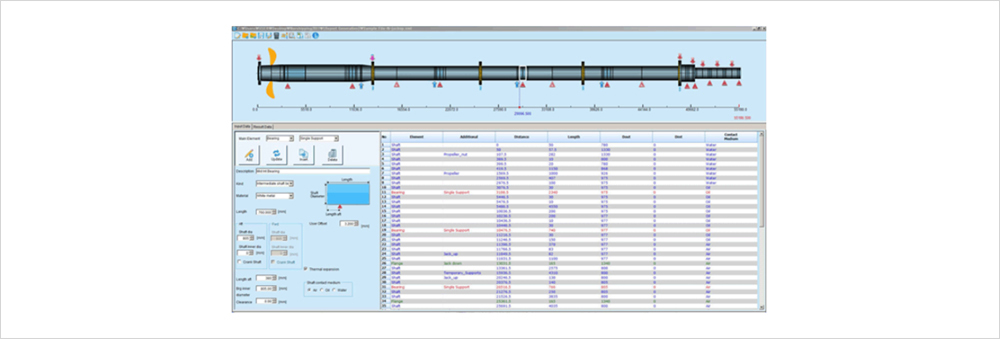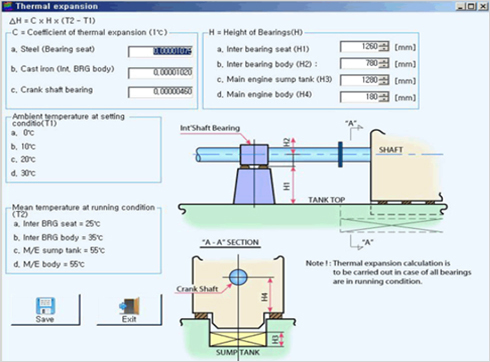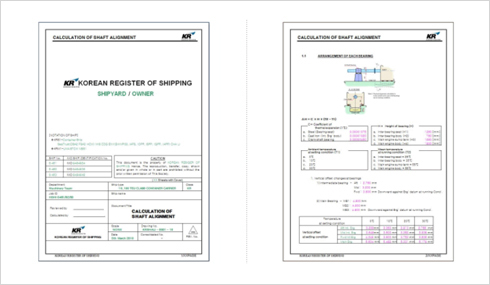技术规范软件开发
SeaTrust-SHALI, optimal shaft alignment program
Release Note
| Version | Release Date | Description |
|---|---|---|
| 1.0 | 2 October 2014 | First release |
Hardware Requirement
| Item | Spec. |
|---|---|
| OS | Windows 7, 10 (32 or 64Bit) |
| CPU | 2GHz or faster |
| Memory | 2GB or more |
| HDD Free Space | 100MB or more |
| Display | 1920 x 1080 (FHD) or higher resolution |
History
The first version of shaft alignment program(SHALI) was developed by KR in the 1980s KR had been used for drawing review and to provide technical services toour customers. However, the "SHALI" had difficulties in reflecting new shaft alignment methods and had a restricted usage to a few skilled persons. Hereupon, KR recognized the necessity for the development of new mathematical algorithm and the expansion of access to general users. As an attempt to this,KR developed the new shaft alignment program, "SeaTrust-SHALI" version 1.0, released in 2009 and updated to version 2.0 thereafter.

Fig.1 Windows based user interface
Advantages
The "SeaTrust-SHALI" provide strong benefits to designers and operators with enhanced user convenience and numerical accuracy, as follows.
User convenience
- Windows based user interface
- Evaluate the effect of thermal expansion on intermediate bearing(s) and main engine bearings in shafting
- Provide a report generator customized for client's demand
- Calculation of unlimited conditions(N-condition) in one shaft model
- Auto-generated calculation report reflecting various kinds of results from N-condition helps remarkably shorten the time to report writing
- Easy-made geometry definition in excel spreadsheet with import/export function.
-

Fig.2 An example of thermal expansion in shafting
-

Fig.3 An example of unlimited conditions(N-condition)
Numerical Accuracy
- New mathematical algorithm(FEM-finite element method)
- Bearing influence number and reaction force
- 7 Alignment results including deflection, stress and moment
- Gap and sag values for open flange
- Jack-up load, correction factor and jack influence number
- Algorithm of optimization using linear programming
-

Fig.4 An example of alignment calculation considering thermal expansion
-

Fig.5 An example of N-gap sag calculation results
-

Fig.6 An example of N-jackup calculation results
-

Fig.7 An example of auto-generated calculation report




